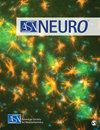米勒细胞分子异质性:事实与预测
IF 3.9
4区 医学
Q2 NEUROSCIENCES
引用次数: 1
摘要
视网膜在历史上被认为是“大脑中可接近的部分”;由于其简单性,有利于用作解释神经系统生理学和病理学基础上的细胞和分子机制的模型器官。然而,最相关的发现恰恰来自于揭示视网膜的复杂性。一种部分依赖于各种特殊神经元和神经胶质细胞类型和亚型的分层组织的复杂性。基于功能、形态学或转录组数据,已经描述了40多种亚型的视网膜神经节细胞或60种亚型的无长突细胞。Müller细胞是所有脊椎动物视网膜的多效性神经胶质成分,其高度特化也可能导致分离为功能多样的亚型。穆勒胶质细胞在维持视网膜稳态中的重要作用涉及参与结构、代谢和细胞间通讯过程。此外,它们是唯一对损伤或疾病具有再生潜力的视网膜细胞,因此可以被视为治疗工具。假设功能异质性可能是由分子异质性驱动的,这篇综述旨在汇编新出现的证据,以拓宽我们对米勒细胞生物学和视网膜生理学的理解。摘要Müller神经胶质细胞在视网膜生理学和视网膜病变中发挥多种基本功能,这可能反映了不同Müler细胞亚群的存在。利用Müller细胞的异质性可能有助于增强视网膜疾病的新治疗方法。本文章由计算机程序翻译,如有差异,请以英文原文为准。
Müller Cell Molecular Heterogeneity: Facts and Predictions
The retina was historically considered as an “approachable part of the brain”; advantageous, for its simplicity, to use as a model organ for deciphering cellular and molecular mechanisms underlying physiology and pathology of the nervous system. However, the most relevant discoveries arise precisely from unveiling the complexity of the retina. A complexity that partially relies on the layered organization of an extended variety of specialized neuronal and glial cellular types and subtypes. Based on functional, morphological or transcriptome data, over 40 subtypes of retinal ganglion cells or 60 subtypes of retinal amacrine cells have been described. A high degree of specialization, that may lead to segregation into functionally diverse subtypes, is also conceivable for Müller cells, a pleiotropic glial component of all vertebrate retinas. The essential role of Müller glia in retinal homeostasis maintenance involves participation in structural, metabolic and intercellular communication processes. Additionally, they are the only retinal cells that possess regenerative potential in response to injury or disease, and thus may be considered as therapeutic tools. In the assumption that functional heterogeneity might be driven by molecular heterogeneity this review aims to compile emerging evidence that could broaden our understanding of Müller cell biology and retinal physiology. Summary statement Müller glial cells exert multiple essential functions in retinal physiology and retinopathies reflecting perhaps the existence of distinct Müller cellular subpopulations. Harnessing Müller cell heterogeneity may serve to enhance new therapeutic approaches for retinal disease.
求助全文
通过发布文献求助,成功后即可免费获取论文全文。
去求助
来源期刊

ASN NEURO
NEUROSCIENCES-
CiteScore
7.70
自引率
4.30%
发文量
35
审稿时长
>12 weeks
期刊介绍:
ASN NEURO is an open access, peer-reviewed journal uniquely positioned to provide investigators with the most recent advances across the breadth of the cellular and molecular neurosciences. The official journal of the American Society for Neurochemistry, ASN NEURO is dedicated to the promotion, support, and facilitation of communication among cellular and molecular neuroscientists of all specializations.
 求助内容:
求助内容: 应助结果提醒方式:
应助结果提醒方式:


